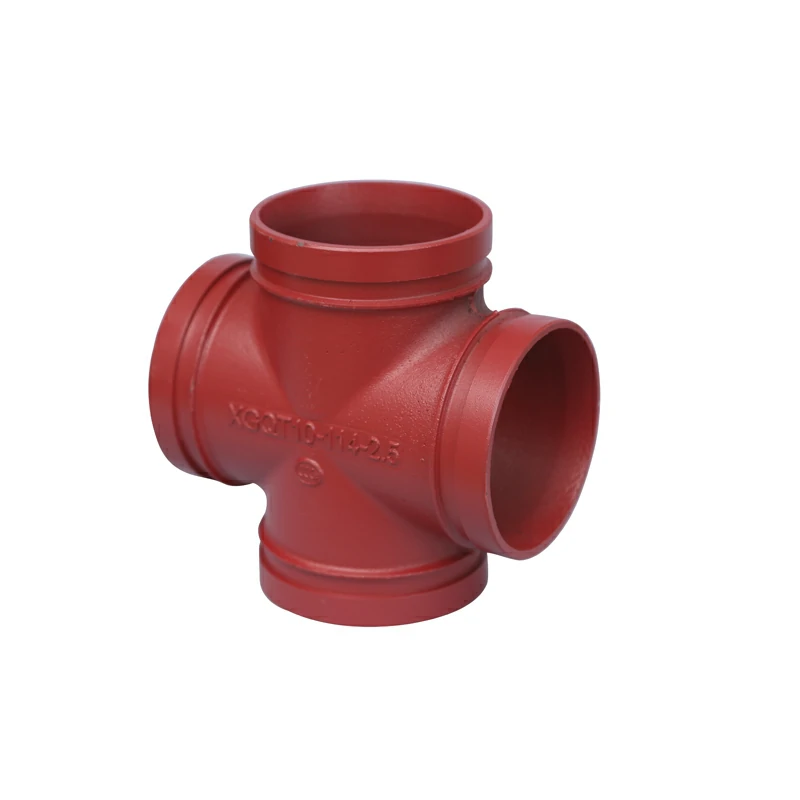While specific case studies highlighting the direct impact of cross tee fittings on fluid flow optimization in notable engineering projects might be limited, their contribution to fluid flow management and hydraulic efficiency can be understood conceptually:
- Balanced Flow Distribution: Cross tee fittings enable the creation of multiple branches or connections within a piping system. By facilitating balanced flow distribution, these fittings help ensure that fluids are evenly directed to various sections of the system, minimizing pressure variations and optimizing flow rates.
- Reduced Turbulence: Properly designed and installed cross tee fittings help minimize turbulence within the piping system. The smooth transitions and well-aligned connections at junction points mitigate flow disruptions, reducing energy losses associated with turbulence and enhancing hydraulic efficiency.
- Precise System Control: Cross tee fittings allow for the integration of control devices, such as valves or flow regulators, at key junctions. This precision control over flow rates and direction optimizes fluid movement, ensuring that the system operates at its most efficient levels.
- Adaptability to Changes: In notable engineering projects requiring adaptability to changes or expansions, cross tee fittings offer the flexibility to modify the system layout without major overhauls. This adaptability supports ongoing optimization as project requirements evolve.
- Pressure Management: Cross tee fittings aid in managing pressure within the piping system. cross tee fitting By distributing fluid evenly across different branches, they prevent pressure build-up in specific sections, thereby reducing the risk of overpressurization and potential damage to the system.
- Flow Volume Optimization: In systems where precise flow volumes are critical, cross tee fittings help achieve the desired flow rates to specific areas or equipment. This optimization ensures that adequate fluid is delivered where needed without wastage or inefficiencies.
- Enhanced System Integrity: Properly installed cross tee fittings maintain the structural integrity of the piping system. Their leak-resistant and secure connections minimize the risk of leaks, preserving system efficiency and preventing unnecessary energy losses due to leaks or inefficiencies.
While direct case studies might be limited, the theoretical advantages of cross tee fittings in optimizing fluid flow and hydraulic efficiency in piping systems are well-established. Their ability to provide balanced flow distribution, reduce turbulence, enable precise control, adapt to changes, manage pressure, optimize flow volumes, and maintain system integrity collectively contribute to improved hydraulic performance in engineering projects.
How did the implementation of cross tee fitting in a specific engineering project improve adaptability ?
While specific case studies detailing the implementation of cross tee fittings for improved adaptability in engineering projects might be limited, their use inherently enhances adaptability in various scenarios:
- System Expansion: In engineering projects where future expansion or modifications are anticipated, cross tee fittings offer adaptability. These fittings allow for the integration of additional branches or connections into the existing system without requiring major overhauls, enabling seamless expansion as needed.
- Modular Configurations: Cross tee fittings support modular construction approaches. They enable the assembly and disassembly of sections within the system, allowing for adjustments, replacements, or reconfigurations without affecting the entire structure, enhancing adaptability to changing requirements.
- Versatility in Layout: In projects with varying spatial constraints or evolving needs, cross tee fittings provide versatility in system layout. Their ability to create multiple branches or junctions allows for customized configurations, adapting to specific space limitations or functional requirements.
- Flexible Fluid Distribution: Cross tee fittings enable the distribution of fluids to different sections or equipment within the system. This adaptability allows for fluid redirection or reassignment based on evolving operational needs or changes in process requirements.
- Accommodation of New Components: In engineering projects where the integration of new equipment or devices is necessary, cross tee fittings offer adaptability. They facilitate the addition of control valves, sensors, or other components at junction points, ensuring the system can accommodate technological advancements or process changes.
- Navigating Obstacles or Constraints: Cross tee fittings assist in navigating around obstacles or space limitations within the project site. Their ability to redirect flow or create alternative routes allows the system to adapt to existing infrastructure or environmental constraints.
- Ease of Maintenance and Repair: Properly installed cross tee fittings provide ease of access for maintenance or repair. They enable sections of the system to be isolated or serviced without affecting the entire structure, enhancing adaptability during maintenance operations.
While direct case studies might not be readily available, the adaptability offered by cross tee fittings is evident in their ability to support system expansion, modular configurations, versatile layouts, flexible fluid distribution, accommodation of new components, navigation of constraints, and facilitation of maintenance. Their use contributes to the adaptability of engineering projects by allowing for adjustments, expansions, or modifications to meet evolving project requirements without significant disruptions to the overall system.

Comments